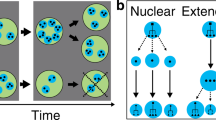Abstract
This paper presents a dynamic state variable model that examines human dispersal in a land-based economy. In humans, like other animals, many individuals disperse during their lifetimes, with extensive variability in the timing and likelihood of dispersal by individuals of different states. The model places human and non-human dispersal in a common framework, specifically by utilizing a cost-benefit approach. As with other animals, individual access to resources likely plays an important role in shaping human dispersal, and the model explores the mechanisms underlying this relationship. Over a series of time steps, individuals must decide whether to stay in their natal area or disperse, given their states (wealth, marital, and inheritance status) and the environmental constraints on dispersal. Costs of dispersal include time and an initial drop in wealth, while the benefit is the potential of the dispersal area to increase wealth. The model determines whether dispersing or staying results in the highest fitness, where fitness is a function of individual wealth and years married. The model shows that dispersal is favorable under a wide range of environmental conditions, but that it also varies predictably according to individual states. Men of middle wealth values disperse under a wider variety of circumstances than poorer or wealthier men. Wealthy men, who are particularly sensitive to the time cost and mortality risk associated with dispersing, appear to adopt a more conservative dispersal strategy than poorer men, who are more sensitive to the wealth cost and wealth growth rate associated with dispersing. Dispersal behavior is also contingent on its effects on an individual's probability of marrying or inheriting wealth. Finally, the model fosters an examination of how the interaction of life events, and their directions of causation, can be studied.
Similar content being viewed by others
Author information
Authors and Affiliations
Additional information
Received: 6 May 1998 / Received in revised form: 3 February 1999 / Accepted: 7 February 1999
Rights and permissions
About this article
Cite this article
Towner, M. A dynamic model of human dispersal in a land-based economy. Behav Ecol Sociobiol 46, 82–94 (1999). https://doi.org/10.1007/s002650050596
Issue Date:
DOI: https://doi.org/10.1007/s002650050596




